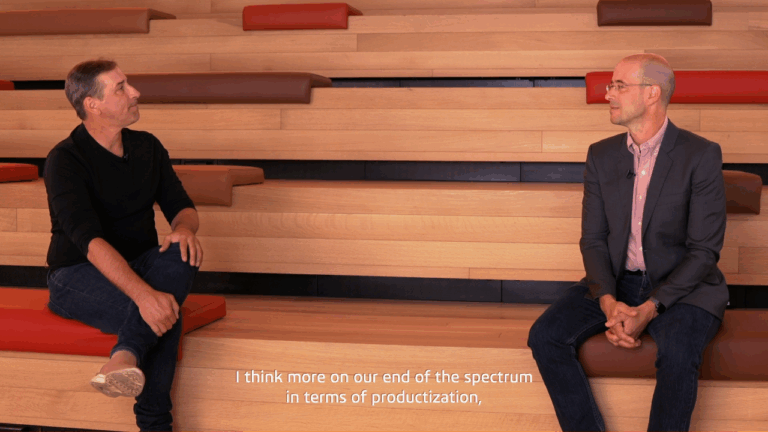In the ever-evolving world of architecture, engineering, and construction (AEC), BIM software (Building Information Modeling) stands out as a game-changer. More than just 3D modeling, it’s a holistic approach to the digital transformation of the built environment. At the forefront of this movement is CATIA , Dassault Systèmes’ leading design platform, used in some of the most iconic infrastructure projects around the globe. From Shanghai Disney resort to Paris’ LVMH Foundation and China’s Daxing Airport, CATIA is enabling what was once unimaginable.
But how does this cutting-edge BIM solution translate into the classroom and prepare the next generation of architects and engineers? Dr. David Gerber, a professor at the University of Southern California, shares insights into the transformative power of CATIA and the 3DEXPERIENCE platform in education and the industry.
Empowering the Next Generation of Builders
The integration of CATIA and the 3DEXPERIENCE platform into USC’s curriculum began in 2016. Since then, the impact on students has been remarkable.
“These students that have gone out there in the world, they started with this simple CATIA class, and went on to do amazing things,” – Dr. Gerber.
It’s not just about teaching software, it’s about reshaping the mindset of future professionals. In an industry often criticized for fragmented workflows and slow adoption of new technologies, solutions like CATIA are breaking down barriers.
Dr. Gerber emphasizes the importance of this cultural shift:
“The greatest challenge that we face is how do we change the culture, partly through education and opening people’s eyes to what’s out there… and how do we look for opportunities to integrate and break down silos.”
CATIA, as a powerful BIM solution, does just that. It fosters collaboration not only across disciplines but also across the entire lifecycle of a building, from concept and design to construction and operation.
From Design to Reality: A True Digital Twin Workflow
CATIA’s strength lies in its ability to bridge the gap between digital design and real-world construction. Unlike traditional CAD solutions, CATIA’s platform supports constructible modeling, ensuring that what’s drawn on-screen can actually be built.
“What was a revelation to me was the ability of a modeling environment like CATIA to actually produce things that were buildable, constructible,” Gerber explains.
Whether it’s complex geometry or massive scale, CATIA’s BIM capabilities provide the digital continuity needed to execute highly sophisticated projects. This makes it a critical tool in today’s mega-structure projects, where coordination and precision are non-negotiable. Discover how CATIA helps general contractors turn complex designs into constructible reality.
Examples of CATIA in Action
- Shanghai Disney Resort: A sprawling theme park that demanded meticulous coordination of architecture, engineering, and theming.
- LVMH Foundation in Paris: Frank Gehry’s architectural masterpiece, filled with irregular curves and glass panels, was brought to life with CATIA’s modeling precision.
- Daxing International Airport in Beijing: Known for its futuristic design and massive scale, this project would have been impossible without integrated BIM technology.
The Role of AI in Generative Design
The AEC industry is on the cusp of another wave of innovation, artificial intelligence. Dr. Gerber sees AI as a complementary force to BIM software, particularly in generative design and the automation of 3D solutions.
“I have embraced it in a number of ways… One will see more and more the auto-generation of 3D solutions. It’s already happening.”
AI can quickly iterate design options, optimize layouts, and identify conflicts, all in real-time. Learn more about how CATIA supports this in generative facade design here.. Combined with CATIA’s robust infrastructure modeling platform, this fusion allows for smarter, faster, and more sustainable designs.
However, Dr. Gerber offers a note of caution:
“There’s going to be a proliferation of tools… and yet there’s going to be some big disruptions coming.”
Choosing the right platforms, like CATIA, that are future-proof and scalable is more important than ever.
A Platform for Innovation and Collaboration
What sets CATIA apart from other construction modeling software is its integration with Dassault Systèmes’ 3DEXPERIENCE platform. This allows for a single source of truth, enabling seamless communication between stakeholders, reducing errors, and accelerating timelines.
No longer do architects, engineers, and contractors work in isolation. With CATIA, they collaborate in real-time, across geographies, and across specialties. The result? Faster decisions, fewer clashes, and more innovative outcomes.
This collaborative ecosystem is especially valuable in an era where sustainability, resilience, and urban complexity are top priorities.
Educating for a Digital Future
The adoption of CATIA and BIM software in academia isn’t just about job readiness, it’s about shaping thought leaders. USC’s program, under Gerber’s leadership, demonstrates how higher education can be a powerful lever for industry transformation.
By exposing students early to the same solutions used by global firms and landmark projects, universities like USC are ensuring that the next generation enters the workforce not just prepared, but ahead of the curve.
Conclusion: Why CATIA’s BIM Software Matters Now More Than Ever
As the building and infrastructure industry grapples with the twin challenges of complexity and sustainability, platforms like CATIA are not a luxury, they’re a necessity. More than just a BIM software, CATIA is a collaborative, intelligent, and future-ready solution that’s already reshaping skylines around the world.
From iconic landmarks to the classroom, CATIA is proving its value as both a tool for design and a platform for transformation. As AI, generative workflows, and data integration continue to evolve, those who invest in robust BIM ecosystems like CATIA will lead the way.
Ready to transform your projects with cutting-edge BIM software?
Discover how CATIA and the 3DEXPERIENCE platform can elevate your design and construction workflows today.

FAQ
What does BIM software stands for and why is it important?
BIM software, or Building Information Modeling software, is a digital tool that enables architects, engineers, and construction professionals to create and manage detailed 3D models of buildings and infrastructure. It’s important because it improves collaboration, reduces errors, and helps deliver projects more efficiently and sustainably.
How does CATIA BIM construction software differ from other BIM solutions?
CATIA BIM software stands out by offering constructible modeling that bridges digital design with real-world construction. Integrated with the 3DEXPERIENCE platform, it enables seamless collaboration across disciplines and project lifecycles, which is critical for complex infrastructure projects.
Can 3D BIM software like CATIA be used in education?
Yes, BIM software is increasingly integrated into academic programs to prepare the next generation of architects and engineers. For example, USC uses CATIA in their curriculum to teach students industry-leading digital design and construction workflows.
How does BIM tools improve project collaboration?
BIM software creates a single source of truth by integrating all project data into one platform. This reduces communication errors, accelerates decision-making, and allows real-time collaboration between architects, engineers, contractors, and stakeholders.
What role does AI play in modern BIM software?
AI is enhancing BIM software by enabling generative design, automation of 3D modeling, and real-time conflict detection. This leads to faster iteration of design options and more optimized, sustainable building solutions.
What is BIM technology and why does it matter?
BIM technology, or Building Information Modeling, is a digital approach to designing and managing construction projects. It improves coordination, reduces errors, and streamlines workflows, making construction faster, smarter, and more sustainable.
